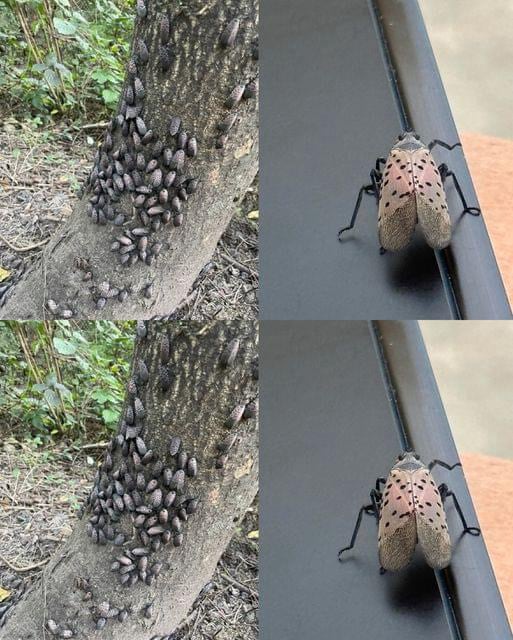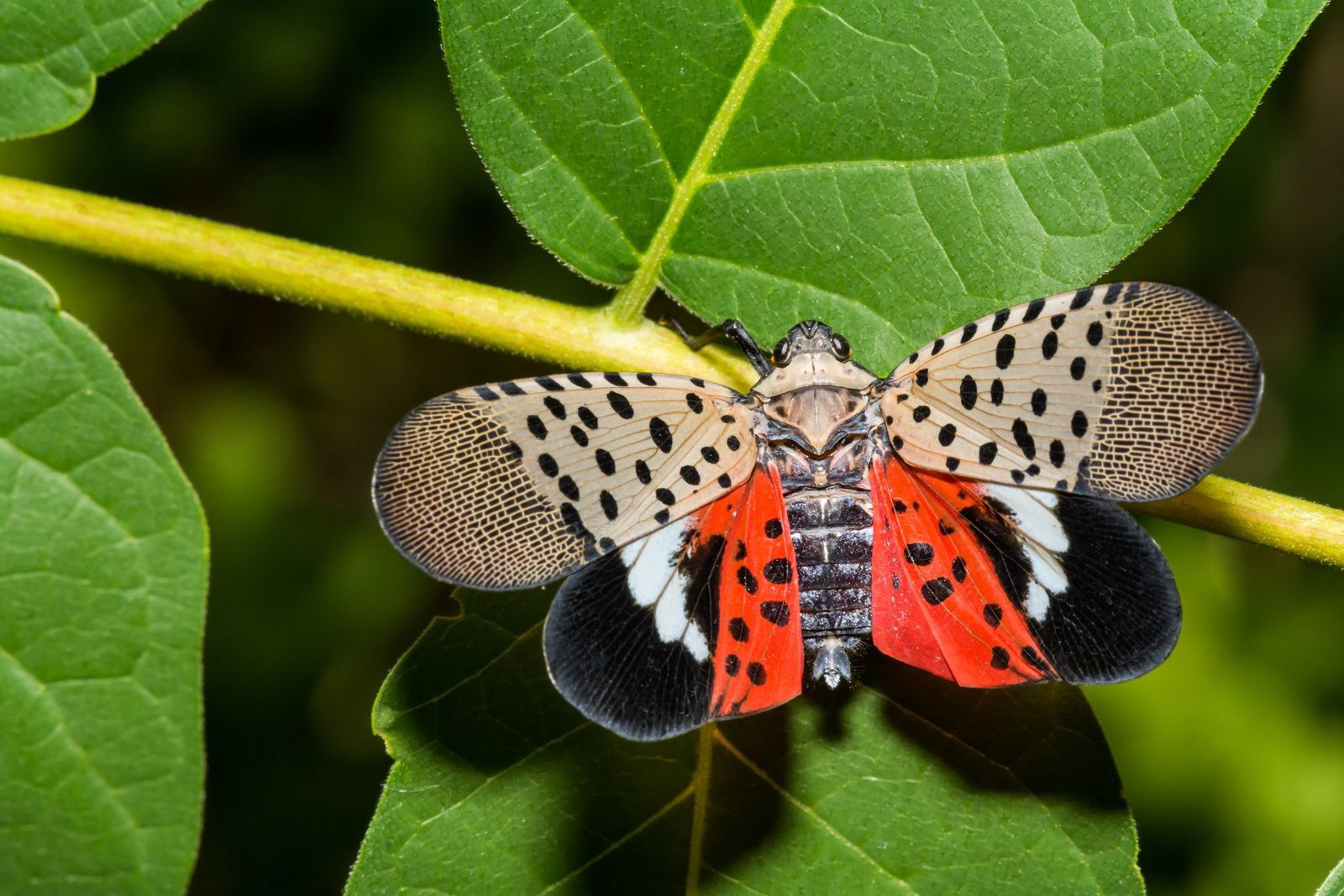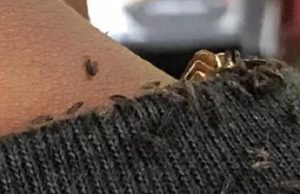
The lanternfly, scientifically known as Lycorma delicatula, is an insect that should be reported immediately if spotted. It originated in China and arrived in Pennsylvania, United States in 2014. Since then, it has expanded fast, causing substantial agricultural and environmental harm.
These invasive pests, with their insatiable appetites, feed on the sap of many plants and trees, causing weakening structures and the production of sooty mold from the sticky honeydew they produce. Unfortunately, this mold hurts the plants by blocking photosynthesis, reducing their ability to thrive.
Identifying lanternflies is rather straightforward. Adult lanternflies measure about an inch in length and have gray wings with striking black markings. Their underwings are a striking blend of crimson and black.

Nymphs, on the other hand, have a black body with white dots that gradually turn red as they age. These pests use a needle-like mouthpart to puncture plant tissue and drain sap, depriving plants of crucial life force.
If you come find a lanternfly, take urgent steps to remove it. Fortunately, there are straightforward methods for achieving this. You can kill both adults and nymphs immediately, effectively eliminating the menace.
It is also critical to eliminate the egg masses, which resemble gray mud stains. To do so, delicately scrape them into a bag containing alcohol or hand sanitizer, immediately terminating the eggs.
By taking action against lanternflies, we may help to conserve our treasured plants and the environment on which they depend. These bugs are a serious hazard, capable of causing widespread damage.

Therefore, whenever you see a lanternfly, consider the potential harm they can cause and act quickly to help protect the health and balance of our ecosystems. Together, we can make a difference.




















